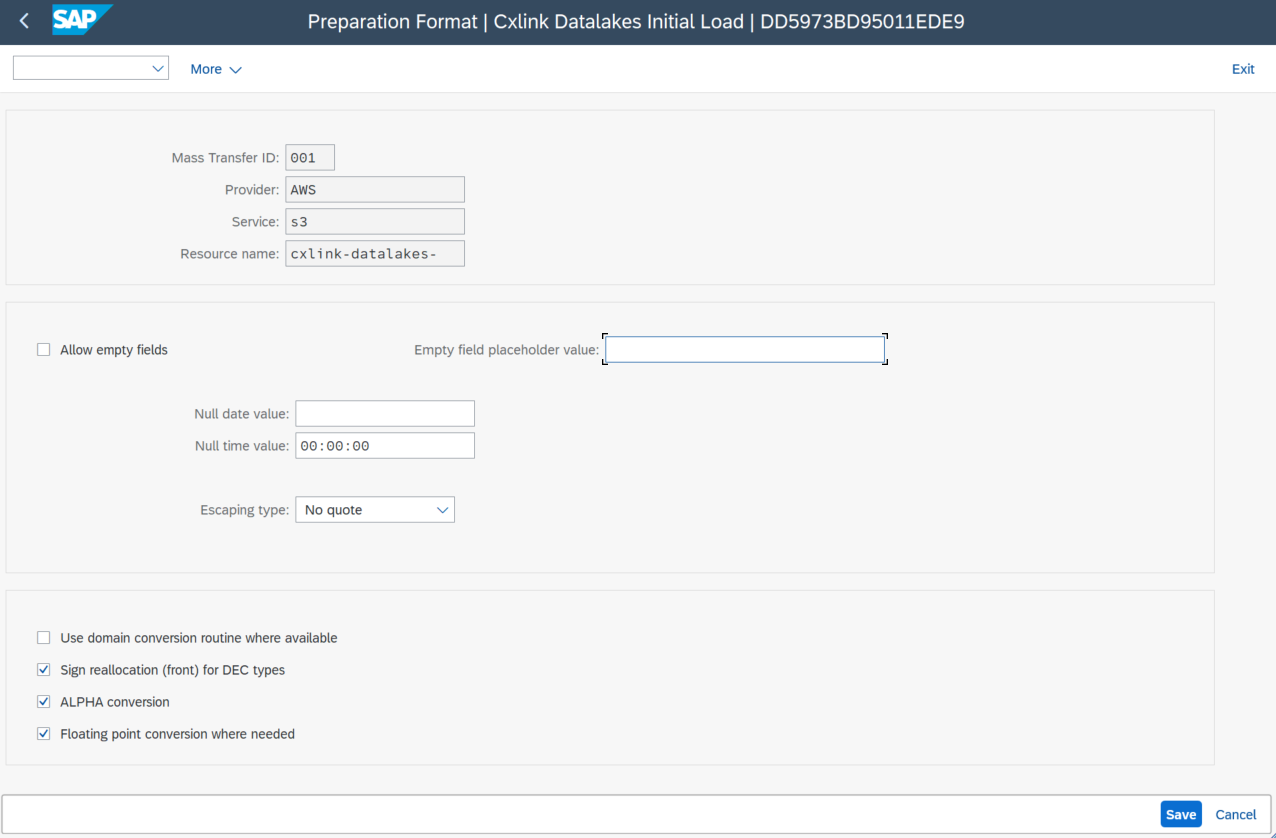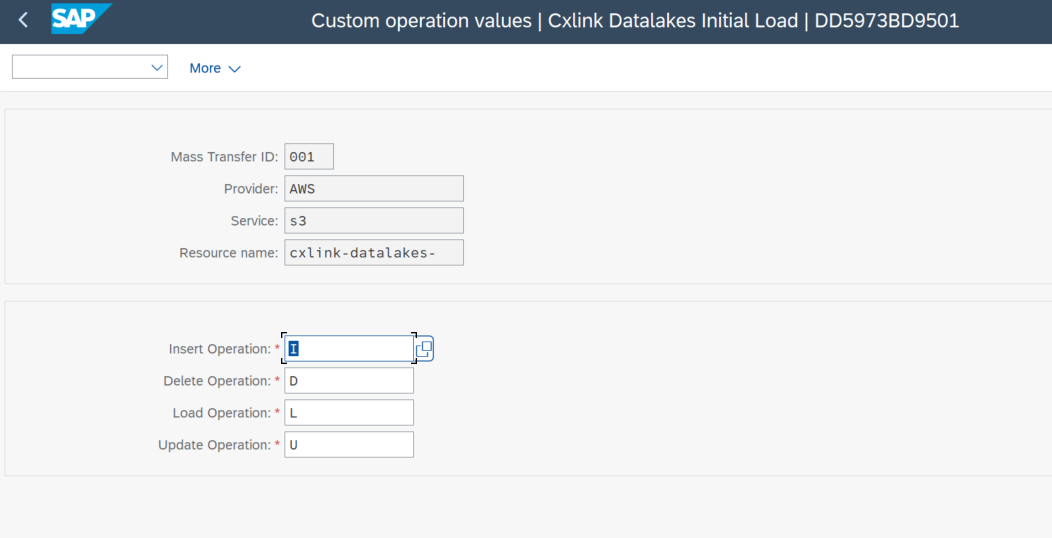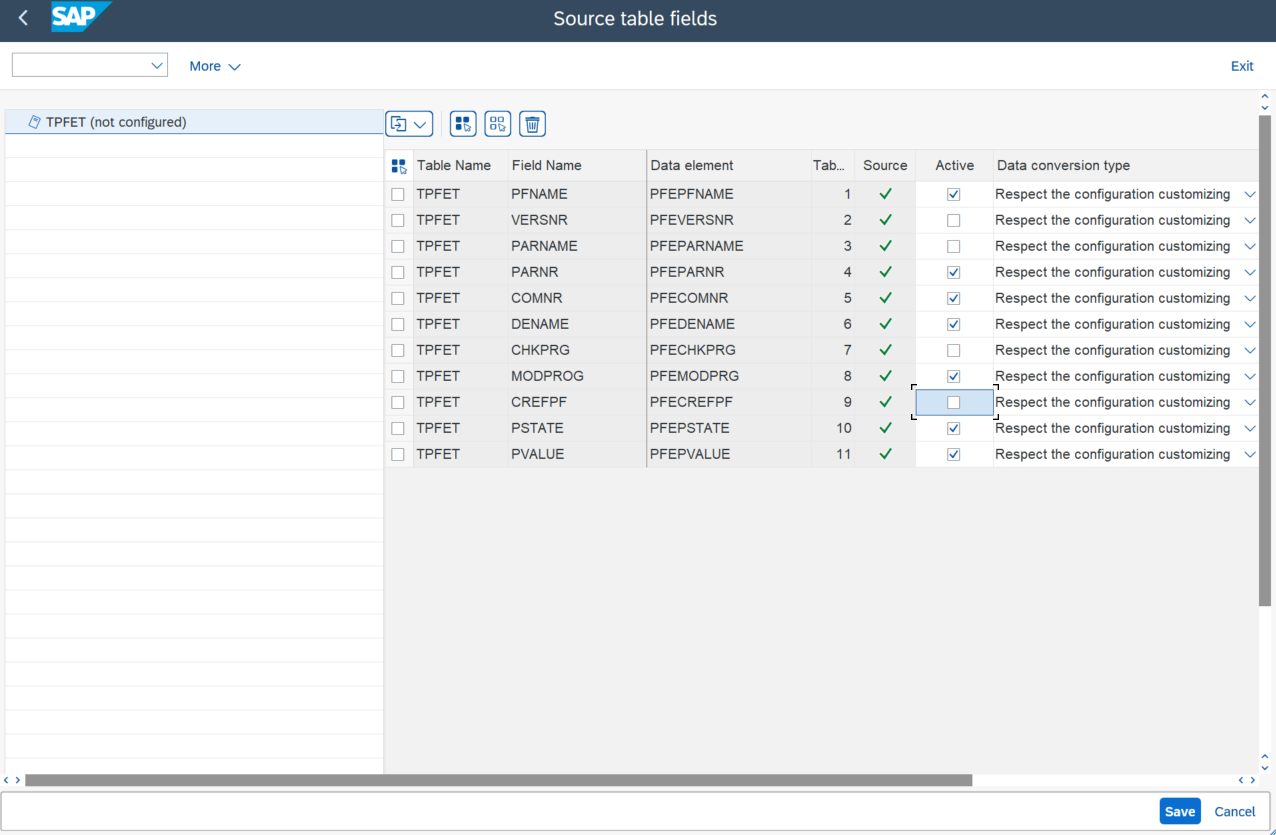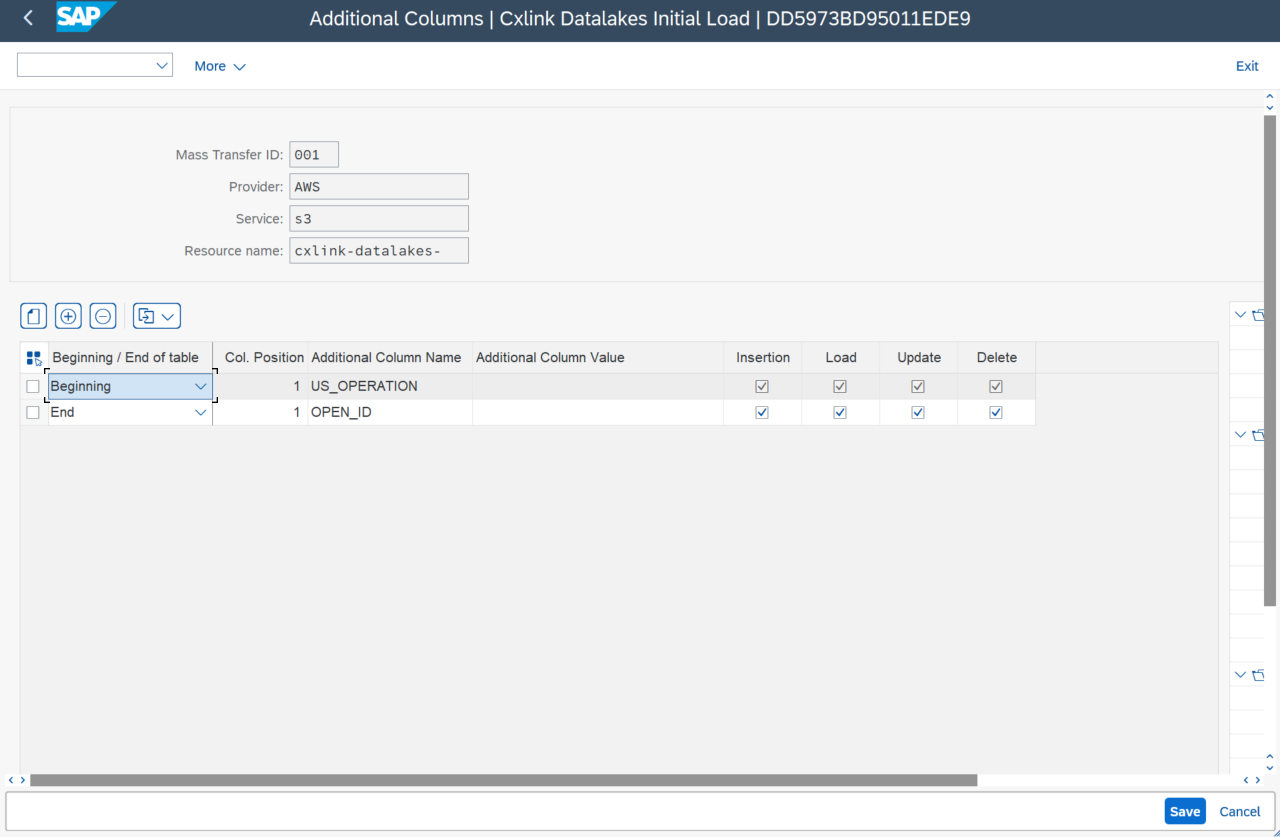Customizing
In this section you will learn all the data customization that you can do to ensure the output is what you expect:
You can add additional customizing to your replication configuration. You will find all customizing options in /n/LNKAWS/SLT_LTR transaction under Customizing tab.

Topics
Data preparation format
This section allows you to configure various parameters related to data preparation at a general level. It provides a checkbox to include a header in the file with the name of each of the submitted fields (applicable to the CSV output format in files created in S3, but not meaningful in other options). There's also a checkbox to allow empty fields or, alternatively, define a character to use in such cases. You have the option to set fixed values when the source data contains an empty date or time, and the choice to establish a data escaping mode to prevent the resulting record from becoming unreadable in case a value contains the CSV separator.
Different options can apply to all possible combinations of target and output format. Please check all of them depending on your selection.
Furthermore, we can implement the following formatting alterations:
-
Domain conversions: Is related to the conversion of the domain inside the data type.
-
Reallocation: Changing the Reallocation of negative sign - it could be putted at the first place for DEC data type.
ExampleBefore (Original value) After (modified value) 13 - -13 -
ALPHA Conversion: Remove zero from data types with alpha conversion routine.
Example material numberBefore (Original value) After (modified value) 000000000000000001 1 -
Floating Point conversion: Floating point conversion.
Example floating point valueBefore (Original value) After (modified value) 1,230000000000000E+02 123,000 
Custom operation values
On this screen, you can declare alternative character values to define insertion, deletion, loading, and updating operations. This is significant because an additional column with the operation type is added to all records, and setting this alternative value changes the character that gets transmitted.

Source fields selection
For system source tables that are loaded or replicated into the Mass Transfer ID, you can choose which fields to generate and which ones to exclude, as well as define specific data conversion types for each field.
Please note that the different messages shown in brackets next to the table name have the following meanings:
-
Not configured: Once the table is added to the standard (Transaction LTRC), it appears here as unconfigured (cxL).
-
Configured: Any changes or saves made in this area will result in the application of internal table settings and CxL configuration fields. These include active/non-active fields, data conversion type, and so on.
-
Not in SLT: A new modality has been introduced to differentiate between instances where the table is not in SLT and instances where a configuration has been made in CxL SLT DL. This is to ensure that the configuration is not lost in the event that the table is reloaded, replicated or otherwise modified in the future.

If this section is not configured, all fields will be sent, and the general-level options for data transformation will be used.
Additional columns
The Additional Columns screen allows you to add columns at the beginning or end of the payload generated from the data loaded or replicated from the source.
There is always an additional column at the start of the payload, which represents the record operation (insertion, modification, loading, or deletion).

To populate the values of the additional columns, you can use literals, any of the existing environment variables, or a combination of both.